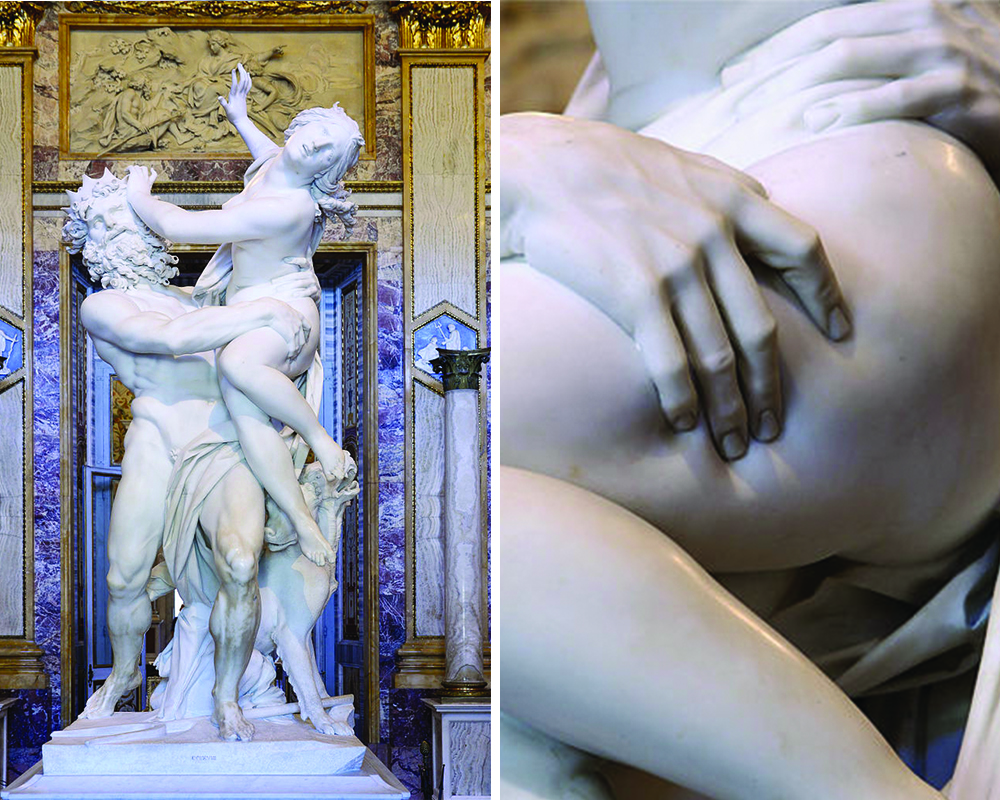7.4: Baroque Art in Italy
- Page ID
- 52496
Baroque art is the style of the late 1500s and 1600s. The important thing to keep in mind now is that the Baroque style in Italy is the direct result of the Counter-Reformation. The Church needs a powerful style of art to use in the fight against Martin Luther—and that’s exactly what the Baroque style is—it is powerful, dramatic, muscular, sometimes frightening, and it really gets to you! Bernini, one of the greatest artists of the Baroque period, worked in Rome, often for the papacy like Michelangelo before him. To get an idea of what a great sculptor he is, and how he can make marble seem like human flesh, look at his sculpure Pluto and Proserpina. What about this sculpture is different than anything we’ve seen before? Look at her hair, how it is flying back behind her as she turns her head, and remains in mid-air.

Contributors
- Baroque Art in Italy. Provided by: Khan Academy. Located at: https://web.archive.org/web/20140215025925/http://smarthistory.khanacademy.org/baroque-italy.html. License: CC BY-NC-SA: Attribution-NonCommercial-ShareAlike
- Rape of Prosepina September 2015. Authored by: Alvesgaspar. Located at: https://commons.wikimedia.org/wiki/File:Rape_of_Prosepina_September_2015-3a.jpg. License: CC BY-SA: Attribution-ShareAlike
- Rape of Prosepina. Authored by: Alvesgaspar. Located at: https://commons.wikimedia.org/wiki/File:Rape_of_Prosepina_September_2015-2b.jpg. License: CC BY-SA: Attribution-ShareAlike

